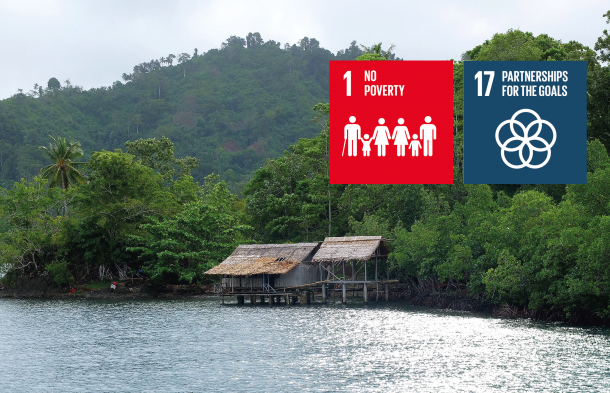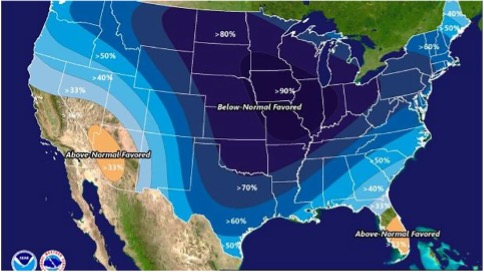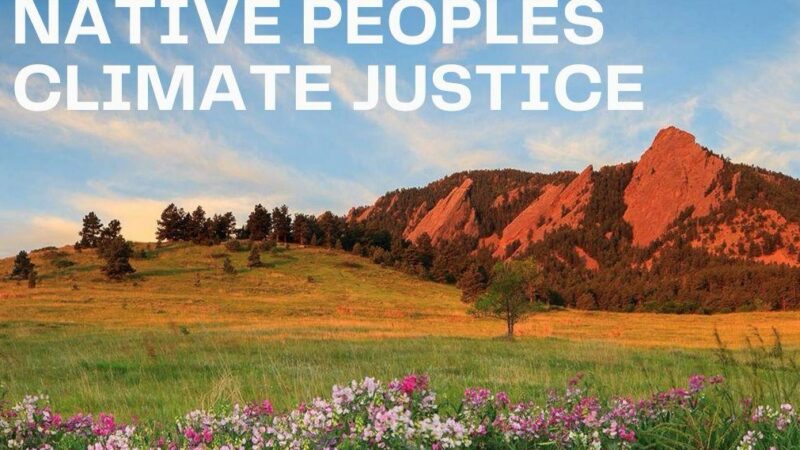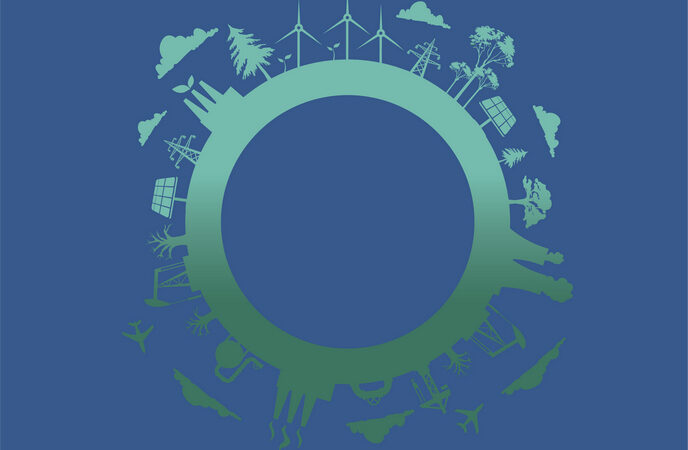Sustainable Development Goal 17 (SDG 17), which stresses the importance of partnership, is a global commitment to enhance support to developing countries, and in particular, to lower income countries and Small Island Developing States (SIDS). It reflects the international community’s recognition that the SDGs can only be realized through robust partnerships. At the backbone of this commitment is country-led monitoring of progress, the mobilization of additional financial resources and measuring the effectiveness of efforts.
This article explores the opportunities and incentives that SDG 17 – and related agreements reached in 2015 – provide to National Meteorological and Hydrological Services (NMHSs).These include improving the effectiveness of information service delivery, contributing to national adaptation plans for climate resilience and sustainable development, and building the case for greater access to climate and other financing.
A great deal of data on sustainable development was gathered in the lead up to the adoption in 2015 of the 2030 Agenda for Sustainable Development, the Paris Agreement under the United Nations Framework Convention on Climate Change (UNFCCC), the SIDS Accelerated Modalities of Action (S.A.M.O.A.) Pathway and the Sendai Framework for Disaster Risk Reduction. One observed trend deserves particular attention: casualty risk for hydrometeorological hazards – the number of people at risk of losing their lives – is increasing in low-income countries and SIDS (see Figure 1)[1]. In addition, it is the poorer segments of the population in these countries that are most affected, and extreme climate events are hampering their efforts to extricate themselves from poverty (UNISDR, 2015). This trend is both unacceptable and reversible[2].
The evidence is also clear that SIDS have far higher levels of risk relative to the size of their populations and economies (IPCC/SREX, 2011). In the case of tropical cyclones, Vanuatu has the highest casualty risk per million inhabitants in the world, with St Kitts and Nevis in third place. This uneven distribution of risk is also more broadly true for low-income countries where, for the same number of people exposed to tropical cyclones, casualty risk is approximately 200 times higher than in OECD countries (UNISDR, 2011).

More targeted research reveals a direct correlation between the intensity of hurricanes and the level of poverty. A variation in the wind intensity of a hurricane that affects a country in Central America leads to a decrease in total per-capita GDP growth of 0.9 – 1.6%, which in turn increases moderate and extreme poverty by 1.5%[3].
This fact is reflected in the first of the SDGs – No Poverty. This goal is underpinned by two inter-linked targets:[4] first, to reduce at least by half the proportion of men, women and children living in poverty, and, second, to reduce their exposure and vulnerability to climate-related extreme events and disasters. In other words, governments have recognized that part of the complex challenge of freeing people from poverty, and its associated vulnerabilities, is to increase capacity to understand, predict and reduce the impact of extreme events. We have collectively committed to achieving this by 2030.
Thus, NMHSs in low-income countries require investments, partnerships and capacity building to improve the effectiveness of their service delivery – especially for early warning systems. They will first need to measure their current capacity and assess their needs in order to find the right partners and work with them to define initiatives, then monitor progress and demonstrate real, people-oriented results.
Measuring the effectiveness of early warnings
The capacity of NMHSs to provide effective weather and climate services that support impact-based early warnings is highly variable.[5] A number of NMHSs, particularly in Africa and in SIDS, operate with low capacity, funding and visibility. They also face challenges in communicating and disseminating their products and retaining qualified staff. At the same time, countries such as Bangladesh, Cuba, India and the Philippines demonstrate that effective early warning systems can save lives and reduce the loss of livelihoods and assets.
Efforts to measure early warning effectiveness reveal the components and mechanisms required. Comparing the loss of lives and livelihoods due to recent event with losses due to events of similar intensity in the more distant past helps to making the case for the effectiveness of early warning systems.
Prior to the Indian Ocean Tsunami in 2004, research focused on specific disaster events and the effectiveness of the warning systems. Since then, a small number of regional and global reviews have been undertaken that assess early warning systems across different hazards and identify gaps and needs against the four elements of an effective multi-hazard, impact-based early warning system – these are a risk-informed system design, a monitoring, forecasting and warning service, communication and dissemination, and public access and ability to respond to the warning.
These reviews usually reveal gaps in the capacity for undertaking certain hazard monitoring and forecasting. They also show an insufficient integration of available risk information into early warnings, resulting in alerts that do not provide information about the potential impacts based on an understanding of the level of risk. Local preparedness to act on warnings is also, typically, inadequate.
It is now generally recognized that the effectiveness of a NMHS cannot be looked at separately from the actions of a broader set of national actors and development sectors. For example, the responsibility for issuing warnings and ensuring the security of the population typically lies with the civil protection authority, not with the NMHS.

Evaluating the economic benefits of weather and climate services has recently been the focus of significant research.[6] While these studies are not normalized and systematically applied, they are used effectively in programmes and projects to demonstrate the cost-return of investment in early warning. NMHSs also use cost-benefit analysis for making the case for investments in public services.
Despite these research advances, few countries currently measure the effectiveness of their early warning system. The tools and metrics to support such efforts are not sufficiently developed.
Metrics that assess early warning effectiveness would help to guide priorities for programming, institutional capacity development and related resource allocation. Metrics would contribute to the strategic plans of NMHSs, the alignment of national needs with development-partners’ support and facilitate access to climate finances. They would provide a basis for reviewing the effectiveness of an early warning post-disaster. They would also be required for international reporting requirements.
The value of partnerships
Rough estimates of the high-priority investment needs for NMHSs in developing countries exceed US$ 1.5 billion to US$ 2 billion, with an additional US$ 400 million to US$ 500 million per year required for operating and maintenance costs (World Bank, 2013). Most of the required resources will need to come from national governments and other in-country sources of investment such as the private sector.
There have been significant efforts by international partners to assist NMHSs in low-income countries, however, the lack of coordination between partners and with NMHSs have stymied advancement. Programmes and projects should be more driven by needs identified by countries, building on existing capacities and resources. International partners are increasingly aware of this. At a Development Partners’ Roundtable convened on this topic by WMO and the Global Facility for Disaster Reduction and Recovery (GFDRR) in April 2016[7], participants converged on the need for sustained engagement with NMHSs based on systematic, consultative and long-term planning among donors and with governments. They also recognized the need to measure the impacts of both their coordination activities and their investments in a way that aligns with key international agreements, including the 2030 Agenda for Sustainable Development.
Nonetheless, many countries are successfully developing their NMHSs through partnerships:
- NMHSs with stronger capacity and expertise are supporting countries with less capacity through bilateral cooperation and assistance.
- Technical innovations are enhancing forecasting capacity in lower income countries. For example, the WMO Severe Weather Forecasting Demonstration Project makes products that have a high computational cost that few countries can afford available to all NMHSs by cascading them down from World Meteorological Centres to Regional Specialized Meteorological Centres then to National Meteorological Centres.
Targets, monitoring and accountability
Most mission statements of NMHSs refer to “saving lives and livelihoods threatened by disasters” or commitments to that effect. This is no surprise, as the first sentence of the World Meteorological Convention reads: “Considering the need for sustainable development, the reduction of loss of life and property caused by natural disasters and other catastrophic events related to weather, climate and water…” (WMO, 2015[8])
Further alignment of NMHS operations with the SDGs has been simplified by the adoption by governments of the targets of the Sendai Framework for Disaster Risk Reduction. Four of the Sendai targets are directly aligned with the mission statements of NMHSs, and governments have successfully hardwired the measurement of the Sendai targets to the SDGs. Thus the same indicators are used to measure both sets of targets. It is expected that governments will decide to follow the same approach for the global goal on adaptation[9] established under the Paris Agreement, providing a seamless set of measurements.
The alignment of monitoring and reporting instruments means that NMHSs will be able to demonstrate and quantify their relevance to national sustainable development efforts, climate change adaptation and security. Key targets are the reduction in the loss of lives (Sendai Target A), the number of people affected by extreme climate events (Sendai Target B), economic losses (Sendai Target C), and the increased access to and the effectiveness of early warning systems (Sendai Target G).
In a world where the number of casualties resulting from disasters will be systematically and annually accounted for by all countries, along with the economic and social impacts based on a standardized set of metrics, political leaders will have an added incentive to pay attention to these figures. NMHSs stand to gain visibility and financial support by quantifying their contribution to the reduction of lives and assets lost.
Climate change finance – an opportunity

Climate change finance[10] provides an opportunity for NMHSs to develop more long-term, programmatic approaches. Following the adoption of the Paris Agreement in 2015, the Green Climate Fund (GCF) became the Agreement’s main financial mechanism. To date (September 2017), the GCF has approved 43 projects, allocating the equivalent of US$ 2.2 billion. When the leveraging of co-financing is considered, the financial value of the portfolio reaches some US$ 7.5 billion.
GCF funding policies align with the stated missions of NMHSs as does its results management framework, which emphasizes early warning systems and climate information. Several approved GCF projects include activities that support early warning and climate information systems. Some of these projects are entirely focused on these topics.[11] But will these projects deliver an essential “paradigm shift”[12] in the way that early warning systems are designed, operated and maintained in order to save lives and livelihoods?
WMO, which is an accredited entity to GCF, NMHSs and other international partners will need to define and monitor this paradigm shift in close cooperation with National Designated Authorities (NDAs) – the country focal points for the GCF. The challenge will be to demonstrate that the capital invested in strengthening NMHSs promotes adaptation and resilience and is supporting long-term incentives for staff retention, engagement with the private sector, and diversification of revenue streams, including through public-private partnerships.
The goal remains the reduction of lives lost
Sustaining support to lower income countries and SIDS around well-established partnerships for climate risk and early warning systems, in line with SDG 17, will go a long way towards reducing the loss of lives and livelihoods and achieving the SDGs.
These efforts will require increased investments, in particular to strengthen the capacity of NMHSs, with climate financing providing the most obvious opening. They will also require a stronger and aligned programmatic approach and the ability to monitor progress. At the forefront are the countries who will monitor the effectiveness of their early warning systems. While development partners will jointly measuring the impact of their aid portfolios and linking these to global targets. This is an opportune time to join the dots.
CREWS Initiative for Accelerated Action
The CREWS initiative was launched at the 2015 UNFCCC Conference of Parties (COP21) in Paris, France, as part of the Climate Change Action Agenda. Its objective is to significantly increase the capacity of LDCs and SIDS to generate and communicate effective, impact-based, multi-hazard, gender-informed, early warnings and risk information.
Investments have been initiated in Burkina Faso, the Democratic Republic of the Congo, Mali, Niger and the Pacific (Fiji, Kiribati, Niue, Cook Islands and Tuvalu).
Australia, France, Germany, Luxembourg and the Netherlands contribute to the pooled trust fund and provide oversight to CREWS operations through the CREWS Steering Committee. The initial financing target is US$ 100 million by 2020. The budget, as of 2017, is US$ 30 million.
CREWS implementation support to countries is provided by the World Bank and its Global Facility for Disaster Reduction and Recovery (GFDRR), the World Meteorological Organization (WMO) and the UN Office for Disaster Risk Reduction (UNISDR). A small CREWS Secretariat is hosted and managed by WMO.
Through its operations, CREWS, in cooperation with its recipient countries, has developed metrics to monitor the impact and effectiveness of its investments against countries’ ability to issue effective risk-informed and impact-based early warning systems and, ultimately, loss of lives and livelihoods.
CREWS is leveraging assisting countries access additional climate financing, such as GCF funds, through by increasing the capacity of NMHSs to operationalize external investmentalignment of result management frameworks and assisting national authorities to emphasize early warning systems, weather and climate services.
CREWS has built an implementation feedback into the design of its country projects. This creates a cycle of improvement in outcomes with each iteration. This, in-turn, provides an environment where successes in programming are more easily scaled-up and replicated globally.
You can access additional information on www.crewsinitiative.org
[1] UNISDR Global Assessment Report (GAR), 2015. According to the same reports, in most countries the number of lives lost to hydrometeorological events is trending down. This is due in a large part to enhanced capacity to predict extreme events, alert exposed populations and reduce risk to future impacts (UNISDR, 2015).
[2] CREWS Investment Plan 2016-2020 (CREWS, 2016)
[3] Ishizawa, Oscar A.; Miranda, Juan Jose. 2016. Weathering Storms : Understanding the Impact of Natural Disasters on the Poor in Central America. Policy Research Working Paper No. 7692. World Bank
[4] SDG1: End poverty in all its forms everywhere. Target 1.2: By 2030, reduce at least by half the proportion of men, women and children of all ages living in poverty in all its dimensions according to national definitions. Target 1.5: By 2030, build the resilience of the poor and those in vulnerable situations and reduce their exposure and vulnerability to climate-related extreme events and other economic, social and environmental shocks and disasters.
[5] “Investing in the Cascading Forecasting Process in Modernizing National Meteorological and Hydrological Services (GFDRR/WB and WMO, 2013); “WISER – Weather and climate Information and SERvices for Africa, Business Case and Summary” (DFID, 2015); “A New Vision for Weather and Climate Services in Africa” (UNDP, 2016)
[6] International Conference on Secure and Sustainable Living: Social and Economic Benefits of Weather, Climate and Water Services, organized by WMO, held in Madrid, Spain, 19 to 22 March 2007
[7]Meeting Summary: Development Partners Roundtable, 13-14 April 2016: Geneva, Switzerland (WMO, GFDRR, 2016)
[8] WMO Basic Documents No.1, 2015 Edition
[9] The global goal on adaptation aims at “enhancing adaptive capacity, strengthening resilience and reducing vulnerability to climate change, with a view to contributing to sustainable development and ensuring an adequate adaptation response in the context of the global temperature goal.”
[10] The UNFCCC has three operating entities: the Adaptation Fund that administers a percentage of proceeds from the Clean Development Mechanism (CDM) to finance adaptation project, the Least Developed Countries Fund (LDCF) and Special Climate Change Fund, both administrated by the Global Environmental Facility (GEF) and, more recently, the Green Climate Fund (GCF).
[11] Examples are “Strengthening Climate Resilience in Sub-Saharan Africa: Mali Country Project” implemented by the World Bank and co-financed by the Climate Risk and Early Warning Systems (CREWS) Initiative; and “Scaling Up of Modernized Climate Information and Early Warning Systems in Malawi” implemented by UNDP.
[12] GCF Governing Instrument Article 2 – https://www.greenclimate.fund/documents/20182/574763/ Governing_Instrument.pdf/caa6ce45-cd54-4ab0-9e37-fb637a9c6235



